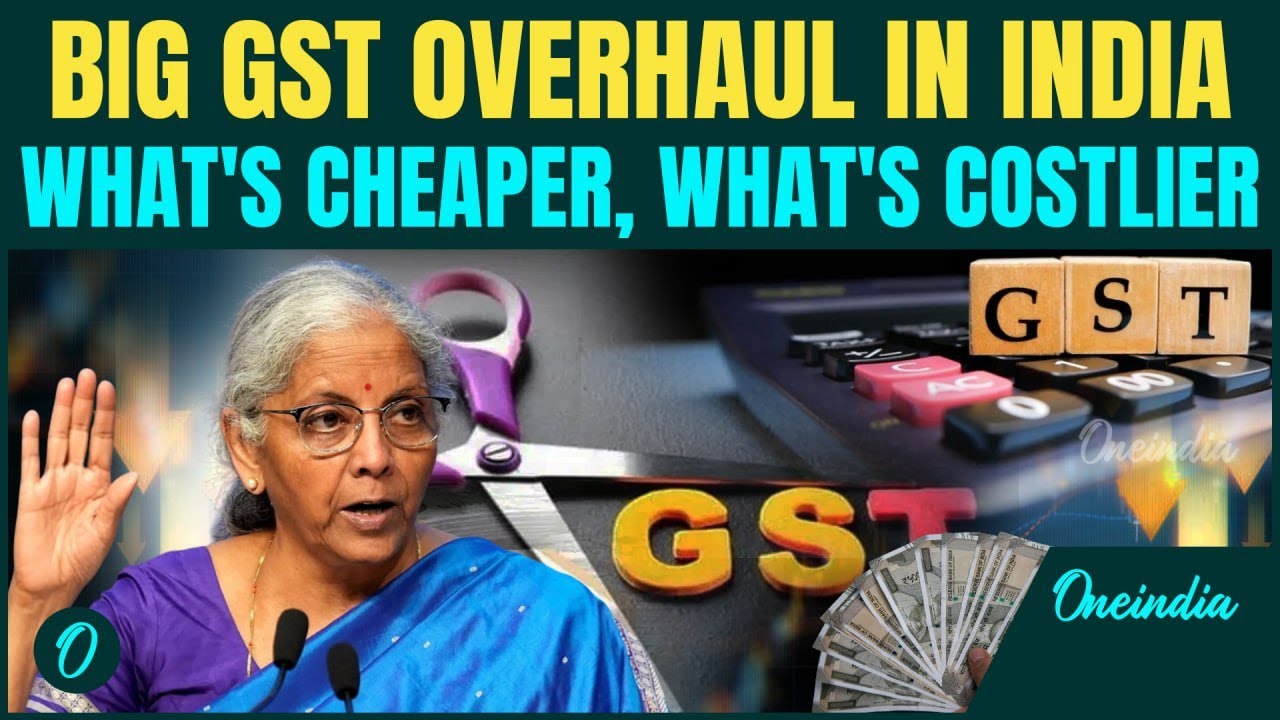From 22 September 2025, the government reworked India’s GST system to simplify things, cut tax burdens on essentials, and adjust rates for non-essentials. Here’s how the new structure works, which goods & services are affected, and what it means for consumers.
🔍 What’s Changed: GST Overhaul
- The old four tax slabs (5%, 12%, 18%, 28%) have been rationalised. Under the new regime there are effectively three main categories:
- Zero (0%) — items that are now exempt
- 5% — essentials and many daily-use goods
- 18% — most other goods & services
- Plus a 40% “luxury/sin” slab for high-end or harmful goods.
- Aim: reduce cost of living for everyday consumers; reduce complexity; pass benefits broadly.
💰 What’s Cheaper Now
Many items frequently used in households will cost less due to lower GST. Here are some key categories and examples:
| Category | Examples of Items Now Cheaper / Exempt |
|---|---|
| Zero (0%) GST | Many school supplies (exercise books, pencils, erasers, crayons), certain bread, milk & milk-derivatives; some basic foods and essential staples. |
| 5% slab | Personal-care & hygiene items like soap, shampoo, toothpaste, hair oil; packaged foods / snacks; dairy spreads & butter & ghee; medical devices / diagnostic kits; certain baby & feeding items; many household goods. |
| 18% slab reductions | Electronics/appliances that were taxed at 28% earlier (like TVs, air conditioners, washers, etc.); small cars/cars with smaller engine capacity; two-wheelers below a certain engine size; many more consumer goods. |
So everyday essentials see the biggest relief.
⚠️ What’s More Expensive / Higher Slab
Some things have been shifted up or placed intentionally in higher tax to reflect luxury status, or because of “sin” / non-essential nature. Examples include:
- Tobacco, cigarettes, pan masala; items seen as “sin goods”.
- Luxury vehicles / high engine capacity cars.
- Goods with luxury / premium positioning.
These now attract the 40% rate.
📊 What This Means for You
- Cost of essentials goes down — groceries, hygiene, medicine, school supplies are cheaper. Good news for middle & lower income households.
- Goods you buy occasionally, especially luxury ones, may still be expensive. If your purchase falls in 40%, you’ll pay more.
- Appliances, electronics & vehicles in certain segments will see noticeable price reductions.
- Insurance & financial products: some individual life & health insurance policies are now exempt from GST (i.e people don’t have to pay GST on them).
- Business side & compliance: simpler structure means fewer slabs to track; trade & manufacture of items now reclassified under new rates will need to adjust pricing, stock-management, accounting.
💭 Take-aways
- This change is a relief for many everyday consumers — cheaper daily goods.
- For big ticket or luxury spending, costs may remain steep or get steeper.
- It’ll be interesting to watch how retailers, manufacturers, and brands pass on the savings; how prices adjust in real-on-ground shops.
- Also worth seeing if this helps control inflation, boost demand, especially during festivals etc.
